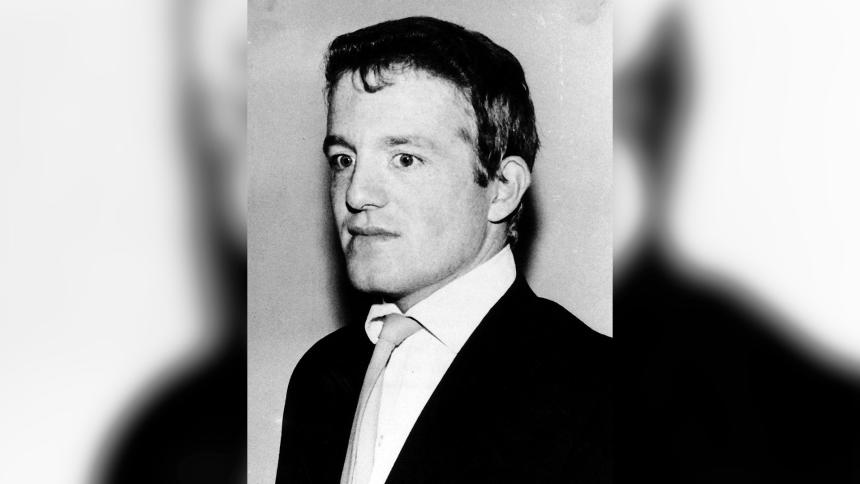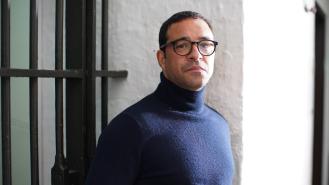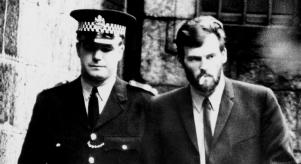
The A6 Murderer: Was James Hanratty guilty?
At approximately 6:45am on 23rd August 1961, Sidney Burton was travelling to work along the A6 near the Bedfordshire village of Clophill. Walking across the grass verge at Deadman’s Hill, a location named for the historical hanging of highwaymen, Sidney noticed something in the near distance that caught his attention. As he approached, he discovered the lifeless bodies of a man and a woman, surrounded by a pool of blood.
Recalling the grim scene, Sidney said: ‘It was a terrible sight. They were covered with blood. I thought they were both dead – but then the woman moved slightly.’ The woman murmured, ‘Please help me.’ Sidney crouched down beside the woman and attempted to comfort her before telling her that he was going to get some help. Just up the road a little bit, 18-year-old John Kerr was working as a traffic consensus man, and Sidney called out for him to come and help.
While John remained at the scene, Sidney rushed back to the village to contact the police. The woman managed to tell John that her name was Valerie and she identified the deceased man as Michael Gregsten. According to Valerie, they had left her home in Cippenham, Slough to plan a motor rally route for their social club. Michael, a married father of two, and Valerie both worked at the Road Research Laboratory in Langley, Buckinghamshire and had developed a friendship through their shared interest in cars.
Valerie recounted that when they reached a common near Dorney Cross, approximately 15 miles from Slough, a man approached their car window. Michael rolled it down, and the man, brandishing a large black revolver, uttered, ‘This is a hold-up. I am a desperate man, I have been on the run for four months. If you do as I tell you, you will be all right.’ The man then climbed into the back seat, instructing Michael to drive around.
After covering about 30 miles, the gunman directed Michael to pull into a layby off the A6. There, he fired five shots at Michael, fatally hitting him twice in the head. Valerie was then ordered out of the car where she was sexually assaulted. She was then instructed to drag Michael’s body into the grass, before being told to get back into the car. Valerie refused and sat on the grass alongside Michael’s body. The gunman then shot Valerie five times, once in the neck and four times in the left shoulder.
Upon the police's arrival at the scene, Valerie provided a description of the gunman, estimating him to be around 30 years old, five feet six inches tall, and of medium build. She detailed his dark hair and deep-set brown eyes. Following the incident, Valerie was transported to the hospital and underwent surgery. Although she survived, the trauma left her paralysed below the shoulders.
The investigative efforts commenced, with the police announcing their search for Michael’s grey Morris Minor, suspecting it had been abandoned by the assailant. A description of the perpetrator was disseminated, portraying him as smartly dressed in a dark grey suit. A cautionary advisory accompanied the description, stating, ‘This man is armed. If you see the car, report immediately to the police.’ Additionally, the public was warned against providing lifts to hitchhikers due to the ongoing threat.
At the crime scene, police found several spent bullet casings which had come from a .38 revolver. As they searched for the murder weapon, a tip came in from a bus driver in Peckham, London. Ernie Brine reported finding a .38 revolver underneath the back seat while he was cleaning the bus and reported that ‘a man with staring eyes got in at Camberwell Green’. He took a six-penny ticket that would take him as far as New Cross Gate. Brine recollected: ‘He was on the top deck, but I never saw him near the back seat.’
The investigation persisted, prompting the police to appeal to boarding-house keepers to report any guests who seemed suspicious. The manager of the Alexandra Court Hotel disclosed that a man who went by the name ‘Frederick Durrant’
On 7th September, a woman named Meike Dalal was assaulted in her home by an individual who claimed responsibility for Michael's killing. Just four days later, two cartridge cases resembling those used to shoot Michael were found in the guest basement bedroom of the Vienna Hotel. The hotel's manager, William Nudds, identified the last occupant of the room as James Ryan. A composite sketch of the murder suspect was shared with individuals at the hotel, leading to their identification of the suspect as James Ryan.
Police initially suspected that James Ryan might be Peter and arrested him on suspicion of murder. However, Valerie could not positively identify him as their assailant, leading to his release without charges. Subsequently, it was revealed that James Ryan was an alias, and the man's true identity was James Hanratty, a 25-year-old unemployed criminal who was arrested by police in Blackpool on 11th October.
At the time of his arrest, Hanratty was already a familiar figure to police. His criminal record traced back to 1954 when he was placed on probation for unauthorised vehicle use and driving without a license or insurance. Following his rejection for National Service due to medical reasons, he was advised to undergo psychiatric treatment. Hanratty was subsequently placed on probation and subjected to shock treatment at the Portman Clinic.
Following three months of treatment, Hanratty was discharged, but his troubles continued. Just five months later, he was arrested for housebreaking and petty crime. Squandering his ill-gotten gains in the West End, he resorted to sleeping rough once his funds depleted. Hanratty found himself on remand at Wormwood Scrubs, where he resorted to slashing his wrists. The prison doctor labelled him as ‘a potential psychopath with hysterical tendencies’.
Two days after Hanratty's 19th birthday, he pleaded guilty at Middlesex Sessions to two counts of housebreaking in Mill Hill. He received a two-year prison sentence, with no recommendation for psychiatric treatment. Released in February 1957, Hanratty returned to prison five months later after stealing a car. Although ordered to serve six months, he was released after four.
Hanratty continued in his life of crime, finding himself arrested for car theft once more on 21st March 1958. He was sentenced to three years corrective training. According to staff in prison, Hanratty was arrogant and refused to obey orders. Hanratty’s sentence was completed in March 1961, and he was back out on the streets.
Following Hanratty’s arrest for Michael’s murder, Valerie identified him as the gunman. He was ordered to stand trial and the jury was selected by 22nd January 1962. During opening statements, Prosecutor E. G. McDermott detailed the events of the night that Michael lost his life and Valerie almost lost hers. He stated: ‘After Gregsten was shot, passion got the better of Hanratty.’ He revealed that Hanratty claimed he had an alibi for the night of the murder, arguing he was in Liverpool with three men. However, he refused to identify these three men.
Just before the defence were about to open their case, Hanratty changed his alibi. He testified that he had made a ‘terrible mistake’ in lying about his alibi, but that he had actually been at a boarding house in Rhyl. He testified: ‘At that stage, I made up a lie and to cover that lie up I made up other lies to cover up the lies I had already said.’
The jury ultimately found James Hanratty guilty of the murder of Michael and the attempted murder of Valerie, leading to his death sentence. Despite having supporters who vehemently believed in his innocence, and a petition to overturn his death sentence amassing over 90,000 signatures, James Hanratty was executed on 4th April 1962.
In the aftermath of Hanratty’s execution, numerous inquiries were initiated, with many accusing the investigation of being flawed. In 1997, the case was referred to the new Criminal Cases Review Commission. The subsequent year saw the testing of traces on a handkerchief used to hold the gun on the bus and on Valerie’s underwear against Hanratty’s brother’s DNA, revealing a strong match to the familial DNA.
In 2001, Hanratty's remains were exhumed, and a conclusive DNA comparison was conducted with the DNA found on the handkerchief and underwear. The results revealed a perfect match, ultimately bringing closure to the case.








